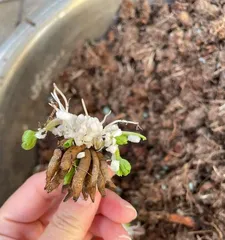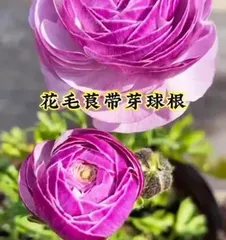Ranunculus is a beautiful and popular indoor plant. However, many people do not know how to properly care for and handle them after enjoying their splendid flowers. This article will provide you with a detailed introduction to the care and handling methods for ranunculus after flowering, helping you extend their flowering period and maintain healthy growth.

I: Water Regulation: Proper watering is key to extending the flowering period of ranunculus. After the flowering period ends, reduce the frequency of watering, but do not let the soil become too dry to maintain moderate moisture.
II: Sunlight: Ranunculus loves bright sunlight, but direct exposure may damage the flowers and leaves. Place the ranunculus in a location where it can receive soft sunlight, and rotate the pot regularly to ensure even light exposure.

III: Temperature Control: Ranunculus has high temperature requirements. The temperature after flowering should be kept between 15-24°C. Avoid exposing ranunculus to cold or excessively hot environments, as this will affect the growth and maintenance of the flowers.
IV: Fertilizer Application: Ranunculus after flowering needs a moderate amount of fertilizer supplement to maintain its growth and flowering ability. Choose a balanced fertilizer suitable for indoor plants, apply it when watering, and pay attention to the concentration and frequency as indicated on the package.
V: Pruning: After flowering, ranunculus may appear withered, yellowed, or become less attractive. At this time, appropriate pruning is necessary. Cut off poorly growing or damaged leaves and flowers by pests and diseases, which helps the plant's metabolism and healthy growth.

VI: Pest and Disease Control: Ranunculus after flowering is susceptible to common pests and diseases, such as aphids and powdery mildew. Regularly inspect the plant and take corresponding preventive measures, such as spraying insecticides or using biological control methods.
VII: Nutritional Supplement: Timely nutritional supplements for ranunculus can be given. Plant health products or plant growth promoters can be used to enhance its immunity and nutritional level, which is conducive to the healthy growth of flowers.
VIII: Moderate Dormancy: Ranunculus also needs a moderate period of dormancy after flowering. Give them some rest time, reduce the frequency of watering and fertilizing to help the plant adjust and recover.
IX: Repotting Management: If you find that the roots of ranunculus are too crowded or the soil quality is poor, you can consider repotting. Choose suitable potting soil, and be gentle with the roots during the repotting process to avoid damaging the plant.
X: Propagation Care: Ranunculus after flowering can also be propagated. You can propagate more seedlings through methods such as division, cuttings, or sowing to expand your garden area or share with others.
XI: Precautions: In the process of caring for and handling ranunculus, you also need to pay attention to some details, such as avoiding wet leaves, timely removal of fallen leaves, and regular dust removal. These small actions help keep the plant clean and healthy.
XII: Experience Sharing: Some plant enthusiasts and growers may have unique experiences and skills in caring for ranunculus. You can ask them for advice or exchange ideas to gain more knowledge about ranunculus care.
XIII: Appreciation: Ranunculus is a plant with ornamental value. Besides understanding its care and handling methods, we can also appreciate its beautiful flowers and learn about its cultural background and symbolic meaning.
XIV: Post-Flowering Extension: Although ranunculus will gradually wither after the flowering period ends, we can extend their flowering period and maintain their healthy growth through proper care and attention. May your ranunculus always be in bloom.
XV: Through this article, we have learned about the care and handling methods for ranunculus after flowering. Proper watering, moderate fertilization, pruning, and pest and disease control are all key to maintaining the healthy growth and extending the flowering period of ranunculus. Hope these tips and secrets can help you in caring for your ranunculus.